The molecules behind plant growth
Plants coordinate their growth through hormones – chemical messengers that instruct cells to do certain activities. Dr Alexander Jones and his team at the University of Cambridge are investigating how one particular plant hormone, gibberellin, affects cells’ behaviour, and what this means for the crops of the future
TALK LIKE A PLANT SCIENTIST
ARTIFICIAL SELECTION – when humans breed together organisms with desirable traits, to produce offspring that also have these traits
BIOENGINEERING – the application of biological techniques such as editing genes, which encode proteins. Subsequently, by editing a plant’s genes, Alexander’s team can edit the proteins in the plant. For a more detailed description of genes and proteins read: https://pediaa.com/difference-between-gene-and-protein/
BIOSENSOR – in biochemistry, a substance that detects and flags another particular substance
ENZYME – a substance produced by an organism that acts as a biological catalyst, causing a particular biochemical reaction
FLUORESCENCE – when light is absorbed and then re-emitted at a longer wavelength (e.g. different colour)
FLUORESCENT PROTEIN – some of the proteins encoded by genes are fluorescent. Alexander’s team uses these fluorescent proteins to make biosensors
GENETIC MODIFICATION – modifying the genome of an organism through adding or removing genetic material
GENOME – the complete set of genes in a cell or organism
GERMINATION – when a seed begins to sprout
GIBBERELLIN – a phytohormone that influences growth, among other effects
PHYTOHORMONE – a chemical produced by a plant that causes cells and the overall organism to respond in a particular way
Just like animals, plants respond to the world around them. Their stems and leaves grow towards light, whilst their roots grow towards water and nutrients. Some plants produce fruit when triggered by stimuli such as warmth and daylight. Some produce bitter chemicals when they sense that they or their neighbours are being attacked by pests. Yet plants do not have a nervous system, a brain, or any of the sensory organs that we are familiar with in animals – so how do they know how to respond?
A big part of the answer lies in plant hormones. The term ‘hormone’ is quite a generic one – it simply refers to a chemical that acts as a ‘messenger’ within an organism, often travelling from one place to another to tell a particular cell what to do. In animals, these are produced in special glands, but in plants they are produced by a much wider range of cells. As scientists learn more about plant hormones, or phytohormones, they are realising just how important they are both for plants and our own food systems.
GIBBERELLIN
“Gibberellin, or GA, is a small phytohormone that can move between cells and organs to coordinate growth programmes,” says Dr Alexander Jones. He is a plant scientist in the University of Cambridge’s Sainsbury Laboratory, where he heads up an interdisciplinary team of researchers investigating exactly what GA does within plants. “The first thing GA does in a cell is bind to a receptor protein, which triggers a cascade of signals that ultimately affects gene expression.”
GA is essential for plants to grow properly, but there is still much that is not yet understood about how it functions or what it regulates exactly. It is known that GA can lead to cells elongating and cells dividing, both mechanisms by which plants grow. GA also plays a part in seed germination, flowering and fruit development – all highly complex processes. Uncovering the pathways behind these processes is what Alexander’s team is working on.
FINDING THE PATH
Chemical signalling involves an initial ‘cue’, an ensuing pathway of reactions and, ultimately, a response from the organism. For instance, GA production can be triggered by cues like decreased light, increased temperature or salt stress. GA levels also fluctuate depending on internal cues, such as the stage at which the plant is in its lifecycle. Once GA accumulates to a certain level, it can trigger growth programmes. “The exact nature of the growth that follows depends on the plant tissue and the timing,” says Alexander. “For instance, GA can trigger the production of enzymes that loosen cell walls, allowing the plant cells to expand. Or near the beginning of a plant’s lifecycle, it an trigger enzymes that release nutrients that stimulate seed germination.”
Phytohormones come in a wide range of shapes and sizes. Because the same chemical can provoke very different responses depending on other conditions, it can be difficult to categorise them by function, and GA is no exception. There is still plenty to discover about how GA functions, in the different parts of a plant and at different times, and how it interacts with other biochemical processes.
PROTEIN ENGINEERING
To be able to tell when and how these pathways are taking place, plant scientists have invented some clever techniques to flag when certain chemicals are present. Scientists can modify plant genomes so they express a special protein that can be easily detected, such as one that lights up or fluoresces differently when it binds to the chemical of interest – the latter of which is exactly what Alexander’s team has created.
Alexander has developed a new biosensor called the Gibberellin Perception Sensor (GPS), which allows his team to tell when GA is being made and in what quantities. “GPS is a direct biosensor, meaning it binds directly to GA,” Alexander says. “It’s based on fluorescence, which means it changes the colours of light it emits when it binds. Fluorescence can be tracked with exquisite resolution.” The biosensor is coded for by a single gene, meaning it can be inserted into a plant’s genome where it will be produced naturally in every cell. The team can then use powerful microscopes to see where GA is being produced and where it travels to.
Reference
https://doi.org/10.33424/FUTURUM142
ARTIFICIAL SELECTION – when humans breed together organisms with desirable traits, to produce offspring that also have these traits
BIOENGINEERING – the application of biological techniques such as editing genes, which encode proteins. Subsequently, by editing a plant’s genes, Alexander’s team can edit the proteins in the plant. For a more detailed description of genes and proteins read: https://pediaa.com/difference-between-geneand-protein/
BIOSENSOR – in biochemistry, a substance that detects and flags another particular substance
ENZYME – a substance produced by an organism that acts as a biological catalyst, causing a particular biochemical reaction
FLUORESCENCE – when light is absorbed and then re-emitted at a longer wavelength (e.g. different colour)
FLUORESCENT PROTEIN – some of the proteins encoded by genes are fluorescent. Alexander’s team uses these fluorescent proteins to make biosensors
GENETIC MODIFICATION – modifying the genome of an organism through adding or removing genetic material
GENOME – the complete set of genes in a cell or organism
GERMINATION – when a seed begins to sprout
GIBBERELLIN – a phytohormone that influences growth, among other effects
PHYTOHORMONE – a chemical produced by a plant that causes cells and the overall organism to respond in a
Just like animals, plants respond to the world around them. Their stems and leaves grow towards light, whilst their roots grow towards water and nutrients. Some plants produce fruit when triggered by stimuli such as warmth and daylight. Some produce bitter chemicals when they sense that they or their neighbours are being attacked by pests. Yet plants do not have a nervous system, a brain, or any of the sensory organs that we are familiar with in animals – so how do they know how to respond?
A big part of the answer lies in plant hormones. The term ‘hormone’ is quite a generic one – it simply refers to a chemical that acts as a ‘messenger’ within an organism, often travelling from one place to another to tell a particular cell what to do. In animals, these are produced in special glands, but in plants they are produced by a much wider range of cells. As scientists learn more about plant hormones, or phytohormones, they are realising just how important they are both for plants and our own food systems.
GIBBERELLIN
“Gibberellin, or GA, is a small phytohormone that can move between cells and organs to coordinate growth programmes,” says Dr Alexander Jones. He is a plant scientist in the University of Cambridge’s Sainsbury Laboratory, where he heads up an interdisciplinary team of researchers investigating exactly what GA does within plants. “The first thing GA does in a cell is bind to a receptor protein, which triggers a cascade of signals that ultimately affects gene expression.”
GA is essential for plants to grow properly, but there is still much that is not yet understood about how it functions or what it regulates exactly. It is known that GA can lead to cells elongating and cells dividing, both mechanisms by which plants grow. GA also plays a part in seed germination, flowering and fruit development – all highly complex processes. Uncovering the pathways behind these processes is what Alexander’s team is working on.
FINDING THE PATH
Chemical signalling involves an initial ‘cue’, an ensuing pathway of reactions and, ultimately, a response from the organism. For instance, GA production can be triggered by cues like decreased light, increased temperature or salt stress. GA levels also fluctuate depending on internal cues, such as the stage at which the plant is in its lifecycle. Once GA accumulates to a certain level, it can trigger growth programmes. “The exact nature of the growth that follows depends on the plant tissue and the timing,” says Alexander. “For instance, GA can trigger the production of enzymes that loosen cell walls, allowing the plant cells to expand. Or near the beginning of a plant’s lifecycle, it an trigger enzymes that release nutrients that stimulate seed germination.”
Phytohormones come in a wide range of shapes and sizes. Because the same chemical can provoke very different responses depending on other conditions, it can be difficult to categorise them by function, and GA is no exception. There is still plenty to discover about how GA functions, in the different parts of a plant and at different times, and how it interacts with other biochemical processes.
PROTEIN ENGINEERING
To be able to tell when and how these pathways are taking place, plant scientists have invented some clever techniques to flag when certain chemicals are present. Scientists can modify plant genomes so they express a special protein that can be easily detected, such as one that lights up or fluoresces differently when it binds to the chemical of interest – the latter of which is exactly what Alexander’s team has created.
Alexander has developed a new biosensor called the Gibberellin Perception Sensor (GPS), which allows his team to tell when GA is being made and in what quantities. “GPS is a direct biosensor, meaning it binds directly to GA,” Alexander says. “It’s based on fluorescence, which means it changes the colours of light it emits when it binds. Fluorescence can be tracked with exquisite resolution.” The biosensor is coded for by a single gene, meaning it can be inserted into a plant’s genome where it will be produced naturally in every cell. The team can then use powerful microscopes to see where GA is being produced and where it travels to.
How does the GPS work?

This schematic explains how the biosensor works in plants. The Gibberellin Perception Sensor (GPS) consists of a protein that binds gibberellin (GA) and two fluorescent proteins, a blue and yellow one. After exposure to a light source, the blue protein emits fluorescent light and transfers some of its energy to the yellow protein, so the yellow protein emits fluorescence. The amount of light emitted depends on how much GA binds GPS; the more GA binds the biosensor, the more the blue protein transfers its energy to the yellow protein.
2) Each part of the Arabidopsis plant (cotyledons, hypocotyl and root) expresses the biosensor.
3) Alexander’s team can detect and image the blue and yellow fluorescent colours by using a microscope.
4) The team analyses the data by using computer software and calculates the ratio of the fluorescence by dividing the amount of yellow light by the amount of blue light.
FINDINGS AND APPLICATIONS
“The first findings of a project like this can often be the most important,” says Alexander. “With a biosensor, you can see something nobody has ever seen before.” For example, the team has found gradients of GA within growing roots and shoots, and is now learning about why these gradients are important for the plant.
Modifications to GA levels in plants have already led to huge benefits for society. In the 1950s and 60s, concerns about possible mass starvations led to scientists finding new techniques to boost agricultural productivity – an effort known as the Green Revolution. One key way they achieved this was through breeding crops to be shorter, so they would put more of their energy towards growing edible grains that were less likely to be damaged by wind. This process involved artificially selecting plants that either made less GA or responded abnormally to GA, so the hormone did not lead to the normal growth effect.
“GA manipulations are already wildly successful in agriculture, but there are sometimes unwanted side-effects,” says Alexander. For instance, one study saw scientists genetically modify rice plants to express lower GA, but found that although modified plants were shorter, they also did not develop rice grains correctly, since GA is linked to both shoot elongation and reproductive development. As Alexander says, “We need a deeper understanding of how GA works so we can finetune these modifications to work for us.”
 DR ALEXANDER JONES
DR ALEXANDER JONES
Research Group Leader
Sainsbury Laboratory
University of Cambridge, UK
FIELD OF RESEARCH: Plant Science and Bioengineering
RESEARCH PROJECT: Investigating how and why the plant growth hormone gibberellin is distributed across cell types.
FUNDERS: This work has received funding from the Gatsby Charitable Foundation under a Gatsby Research Fellowship and from the ERC under the European Union’s Horizon 2020 research and innovation programme (grant agreement n° 759282).
 DR ALEXANDER JONES
DR ALEXANDER JONESResearch Group Leader
Sainsbury Laboratory
University of Cambridge, UK
FIELD OF RESEARCH: Plant Science and Bioengineering
RESEARCH PROJECT: Investigating how and why the plant growth hormone gibberellin is distributed across cell types.
FUNDERS: This work has received funding from the Gatsby Charitable Foundation under a Gatsby Research Fellowship and from the ERC under the European Union’s Horizon 2020 research and innovation programme (grant agreement n° 759282).
MEET THE TEAM
Alexander’s research group includes people from a wide range of academic backgrounds, which ensures that the relevant expertise is present at every stage of the project. Below, two team members share their insights.

BIJUN TANG, PHD STUDENT
WHAT IS YOUR ROLE IN ALEXANDER’S RESEARCH GROUP?
My role in this project is to focus on re-engineering and improving the GPS biosensor. This sensor detects GA concentrations, so gives us an insight into GA distribution in plants and how concentrations change during plant growth.
CAN YOU DESCRIBE THESE BIOENGINEERING ACTIVITIES?
One issue with our biosensor is that it is not reversible – once it binds to the GA, it cannot be released easily. This means we can only detect increases in concentration, but not decreases. We are trying to engineer the sensor to allow the bound GA to be released easily, while maintaining its ability to bind easily in the first place.
HOW DOES YOUR KNOWLEDGE OF BIOCHEMISTRY AND MOLECULAR BIOLOGY HELP IN YOUR WORK?
Biochemistry involves investigating the structures and functions of proteins. The sensor we made is essentially one protein formed from four different proteins, so having biochemical knowledge helps me improve the sensor’s function by investigating its structure.
YOUR PHD IS IN BIOCHEMISTRY BUT YOU STUDIED NATURAL SCIENCE.
During my undergraduate degree in natural sciences, I learned the foundations of many different aspects of biology through lectures and practical classes. I realised that understanding proteins was what interested me the most, which led me to a PhD in biochemistry.
My father is a professor of chemistry in my hometown of Shenzhen in China. He has always been a role model for me and demonstrated enthusiasm and passion about science.
WHAT DO YOU HOPE TO DO AFTER YOU COMPLETE YOUR PHD?
My research experience has been great so far and making new discoveries excites me every day. After finishing my PhD, I would like to develop more powerful molecular tools and use them to understand cellular events in plants. My goal is to improve the quality of crops, so they are resistant to environmental stress.
WHAT DO YOU LIKE TO DO OUTSIDE OF WORK?
I like to play table tennis. I was captain of my university’s women’s team when I was an undergraduate and we played many regional and national matches. During lockdown, I transferred my interests to painting, and playing the flute and piano!

DR ANNALISA RIZZA, RESEARCH ASSOCIATE
WHAT IS YOUR ROLE IN ALEXANDER’S RESEARCH GROUP?
My role in this project is to understand how and why GA is distributed through the plant. I look at GA in two zones in plant roots: the tip, known as the division zone, and the intermediate part, called the elongation zone. I found that the cells in the division zone contain less GA than in the elongation zone, getting us closer to understanding how GA distribution influences root growth.
WHICH PLANTS DO YOU STUDY?
We use Arabidopsis thaliana, a small flowering plant used as a model organism by many plant scientists. It is quick and easy to grow, produces a lot of seeds and has a small genome that makes its genetic functions easy to study. It is also easy to insert new genes into its genome, to investigate the effect they have on plant function or to introduce our biosensors as research tools.
HOW DOES THE GPS BIOSENSOR WORK?
We genetically modify Arabidopsis plants to express the GPS biosensor, a relatively easy process that only involves the insertion of one gene. When GPS binds to GA, it changes shape and emits a certain sort of fluorescence. We can then use a fluorescence microscope to detect where GA is being expressed in the plant and in what quantities.
WHAT DO YOU ENJOY ABOUT YOUR WORK?
I am a curious person and love discovering new things. My work feeds my curiosity and I can do different experiments every day to answer biological questions.
DID YOU ALWAYS WANT TO STUDY PLANTS?
At the beginning of my career, I wanted to become a medical doctor, but changed my mind after seeing a frog get dissected. I believe that not sticking to my original plan was a good choice for me. My advice is that it is excellent if you are strongly committed to one particular career goal, but if you do not have this goal, be open to big changes early in your career path.
HOW DID ALEXANDER BECOME A PLANT SCIENTIST?
WHAT DID YOU WANT TO BE WHILE GROWING UP?
I have always wanted to become a biologist of some sort. I love studying living things.
HAVE YOU ALWAYS BEEN FASCINATED BY PLANTS?
Yes, I have. They are fundamental to our existence and yet we understand so little about them. Plants ‘think’ differently to humans and thrive with entirely different strategies for life. There is a subtle beauty in the logic of plants.
IS THERE A BOTANIST YOU PARTICULARLY ADMIRE?
John Stevens Henslow, Darwin’s mentor, was their time carefully observing plant traits and drawing insights from them. Scientific tools have dramatically changed since then, but I admire their attention to detail and their love of knowledge.
WHAT ASPECT OF YOUR WORK EXCITES YOU THE MOST?
Inventing new technologies and discovering new information about plants are equally exciting. Often, they go hand in hand, with some years in between.
WHAT TRAITS DO YOU FIND USEFUL AS A SCIENTIST?
Perseverance is an important trait in all science, but particularly in plant science where so much patience is required. Creativity and the courage to act on new ideas despite the risk of failure are also very valuable.
WHAT DO YOU WISH YOU HAD KNOWN WHEN YOU WERE YOUNGER?
How important teamwork is to science, and to ask for advice from senior mentors early and often. You are not expected to know everything at any point, and certainly not at the start of your career!
WHAT WAS YOUR FAVOURITE BOOK AS A TEENAGER?
I liked fantasy books, wizards and rings and such. “Any sufficiently advanced technology is indistinguishable from magic,” as Arthur C Clarke said!
EXPLORE A CAREER IN PLANT SCIENCE
• Plant science (sometimes referred to as botany) can draw on many different biological disciplines, such as biochemistry, molecular biology, genetics and ecology. Degrees in biology, natural sciences and related disciplines can all lead to a career in plant science.
• There are many outreach schemes that introduce secondary school students to the world of plant sciences. For instance, the Sainsbury Laboratory runs the Gatsby Plant Science Education Programme, which supports c curriculums and runs bioscience summer schools.
• The average molecular and cellular biologist salary in the UK is £37,000.
Undergraduate degrees in biology generally require qualifications in at least two science subjects and maths. Alexander recommends a foundation in maths and computer programming for any scientist. Once at university, he says that courses involving biochemistry, signalling and structural biology are all very useful.
Write it in the comments box below and Alexander, Bijun or Annalisa will get back to you. (Remember, researchers are very busy people, so you may have to wait a few days.)

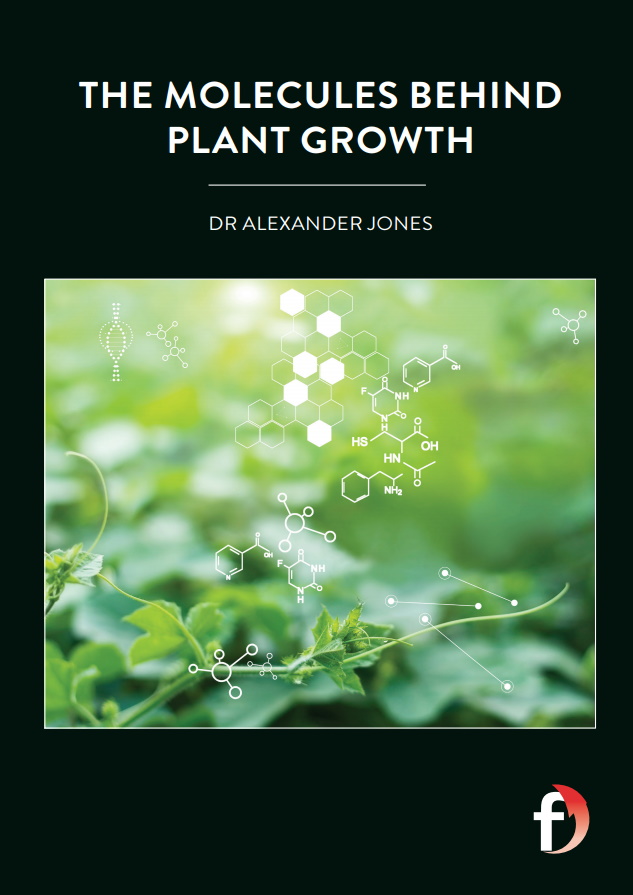
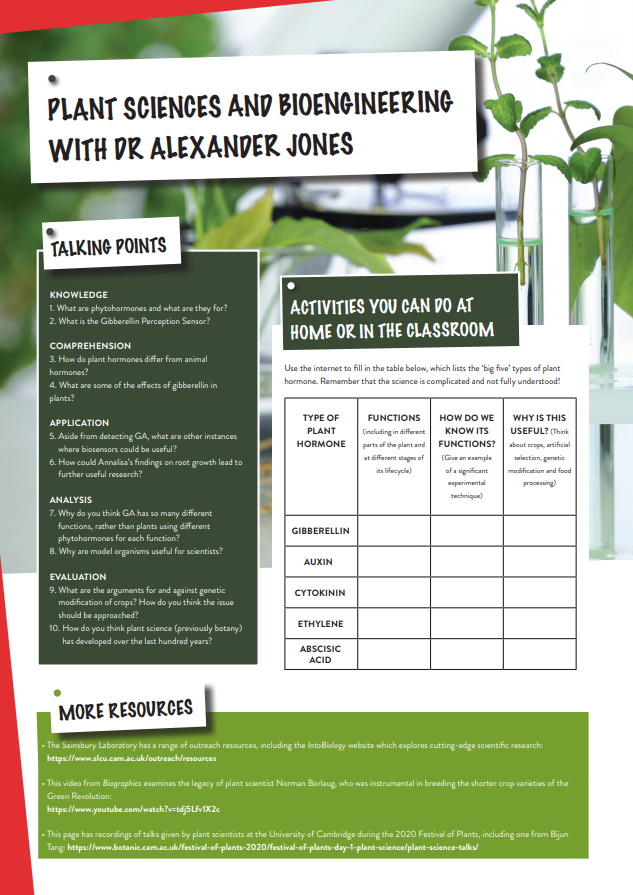

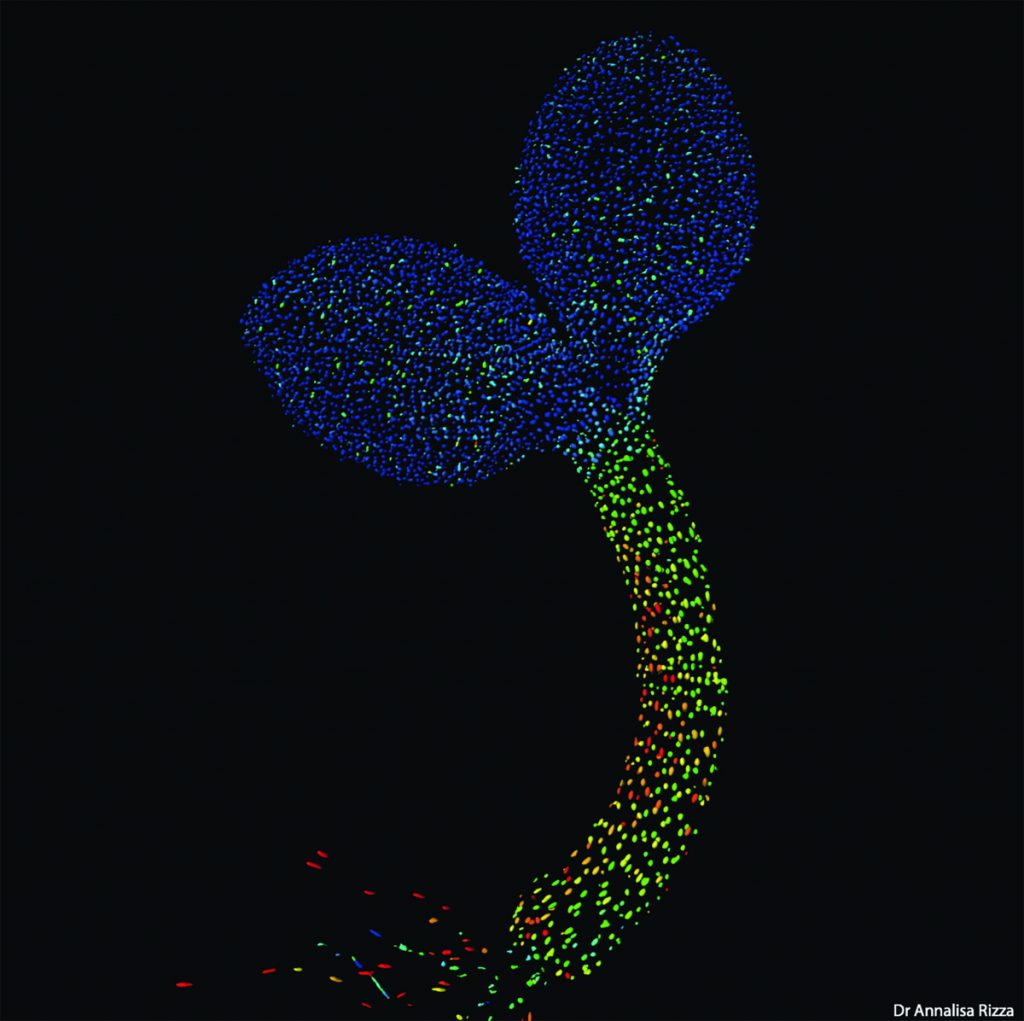

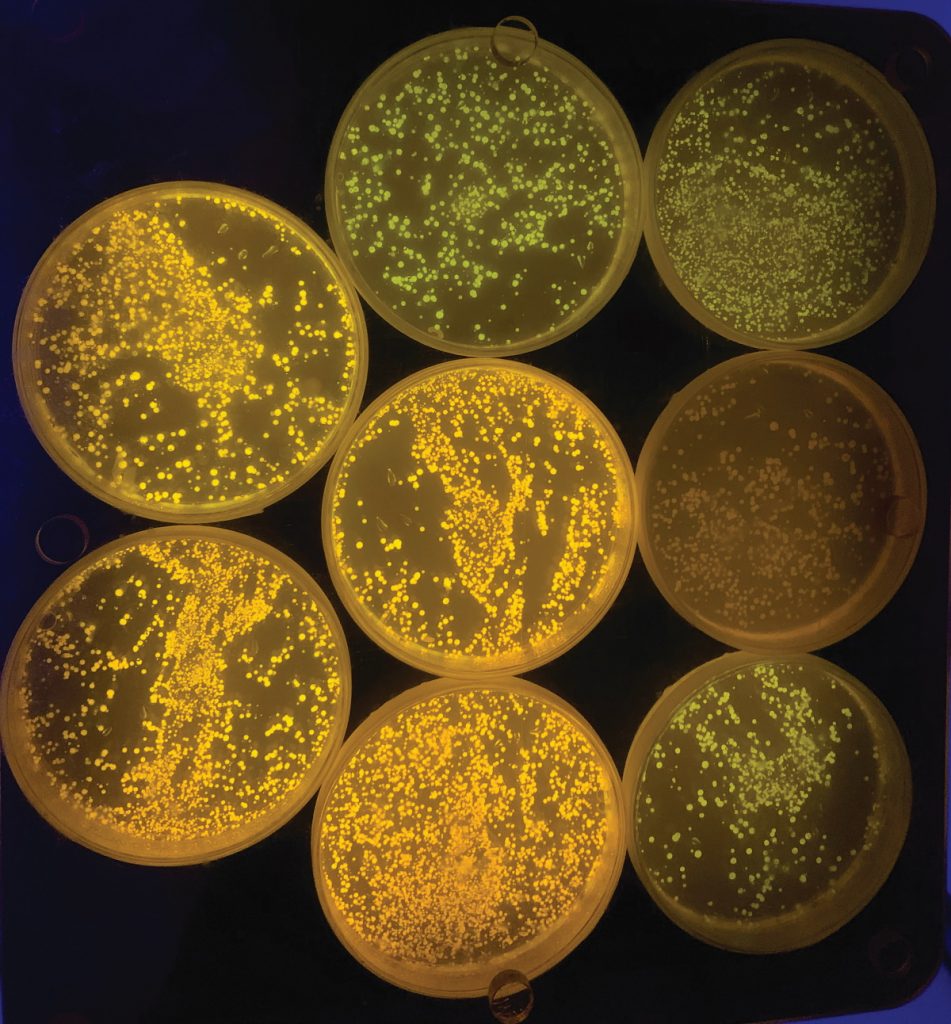



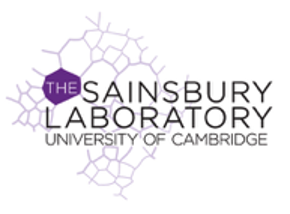
Hello, I wondered whether your work looking into the presence of flowering hormones has also looked into what is happening to the leaves? I ask in relation to kale and its nutritional content as I am a grower for a market garden. It’s a long season crop but will the phytonutrient levels in leaves drop off once the early stages of flowering starts up?
Hi Rachel,
Thanks for your fascinating question! Unfortunately, I do not have any direct answer for you, only indirect information that may or may not apply to kale at the growth stage you are referring to. My (unreliable) guess would be that the process of senescence and nutrient reallocation away from leaves would indeed have begun during flowering for a bolting plant like kale. But I would also guess that one could go by loss of chlorophyll content (relative yellowing) to be a rough guide as to how much senescence has progressed. Senescence researchers would have much more to say about this! A quick note on flowering ‘hormones’ – while gibberellins do promote flowering in many plants, the mobile molecule that is most associated with controlling the switch to flowering is actually a protein (AKA a polypeptide macromolecule). The gene that encodes this protein was aptly named Flowering Time and the protein is often called FT for short.